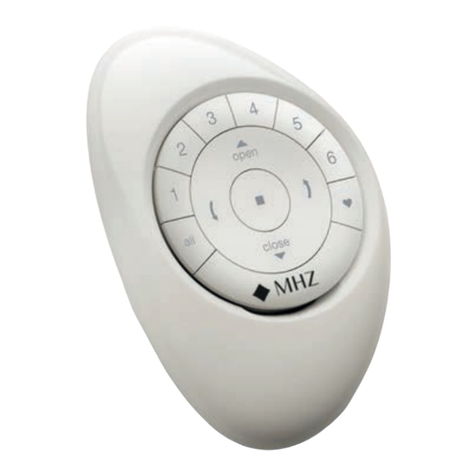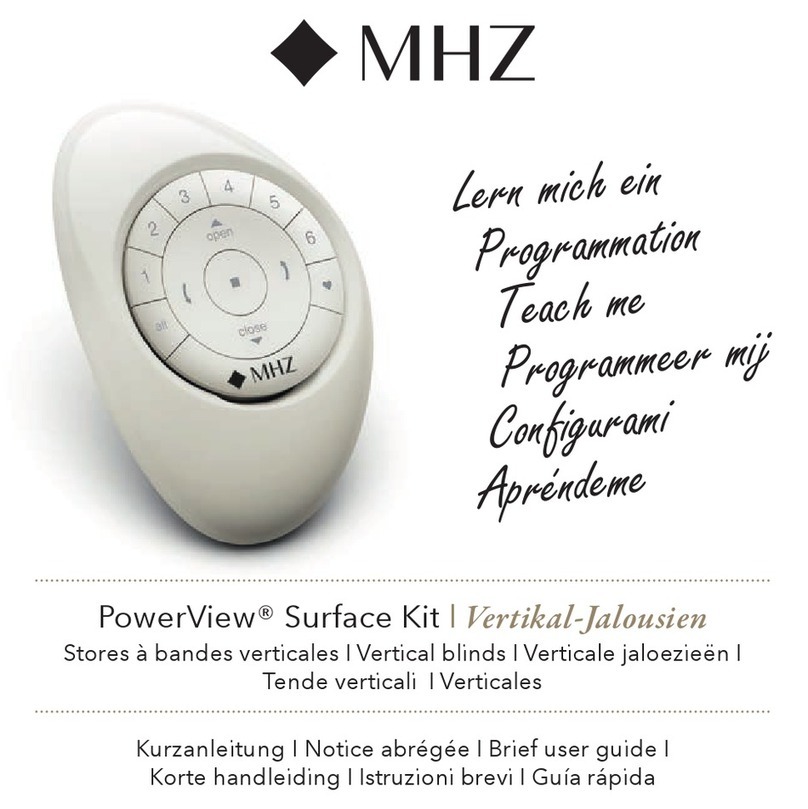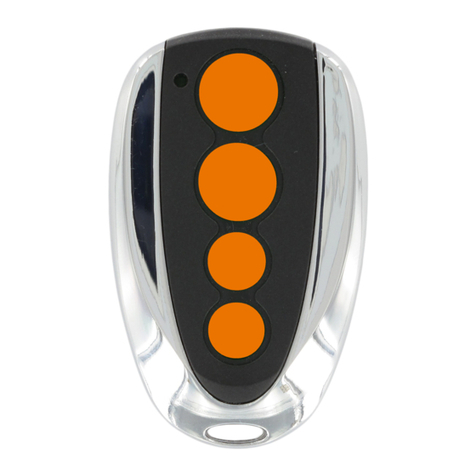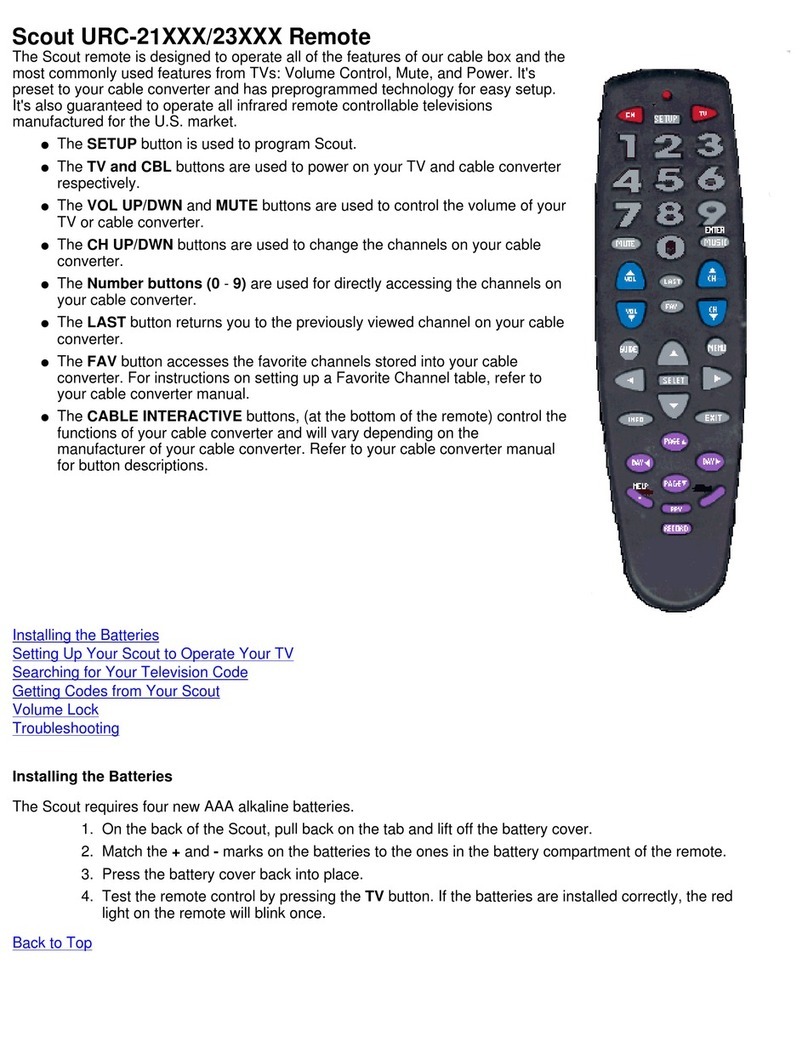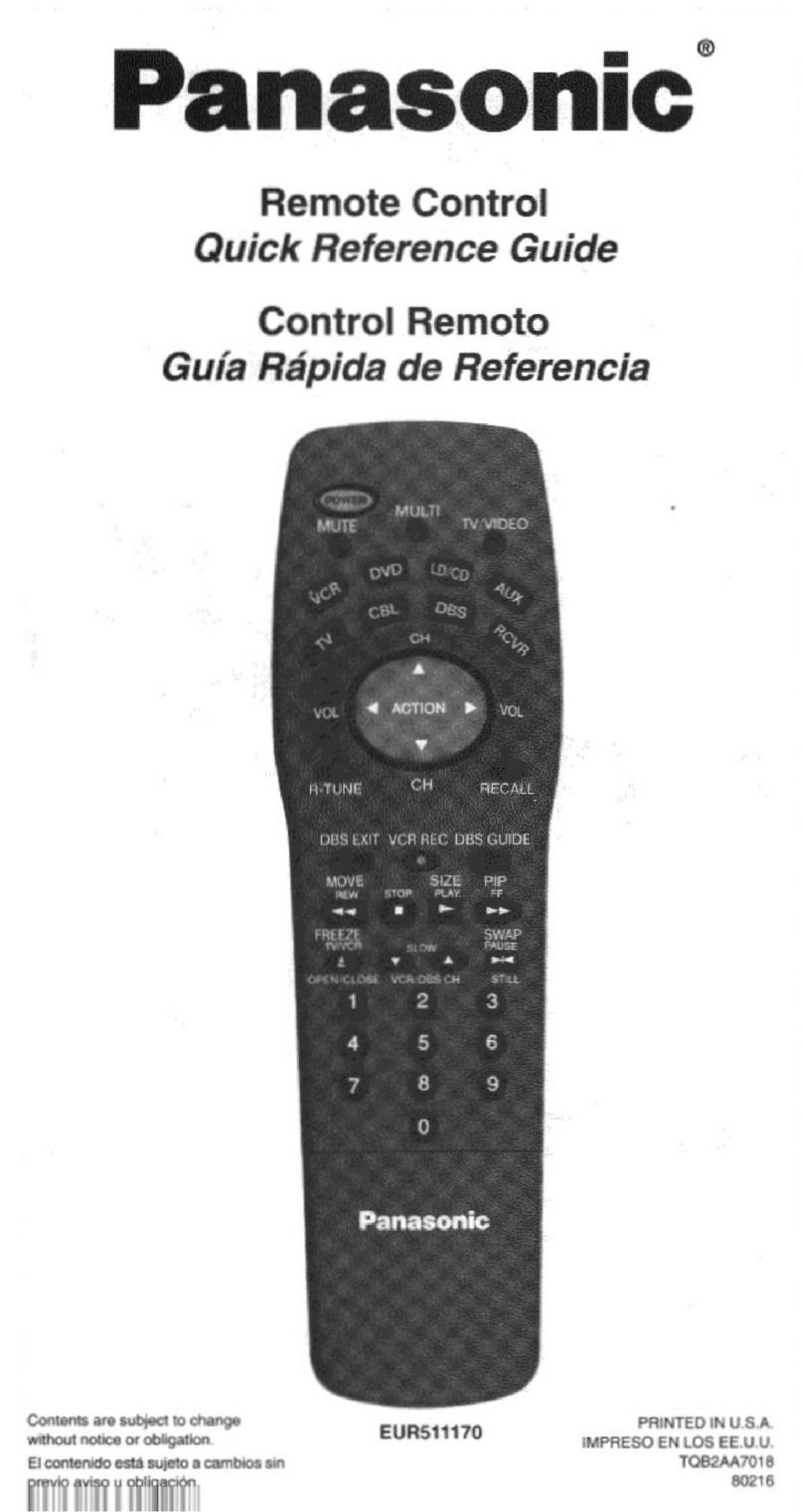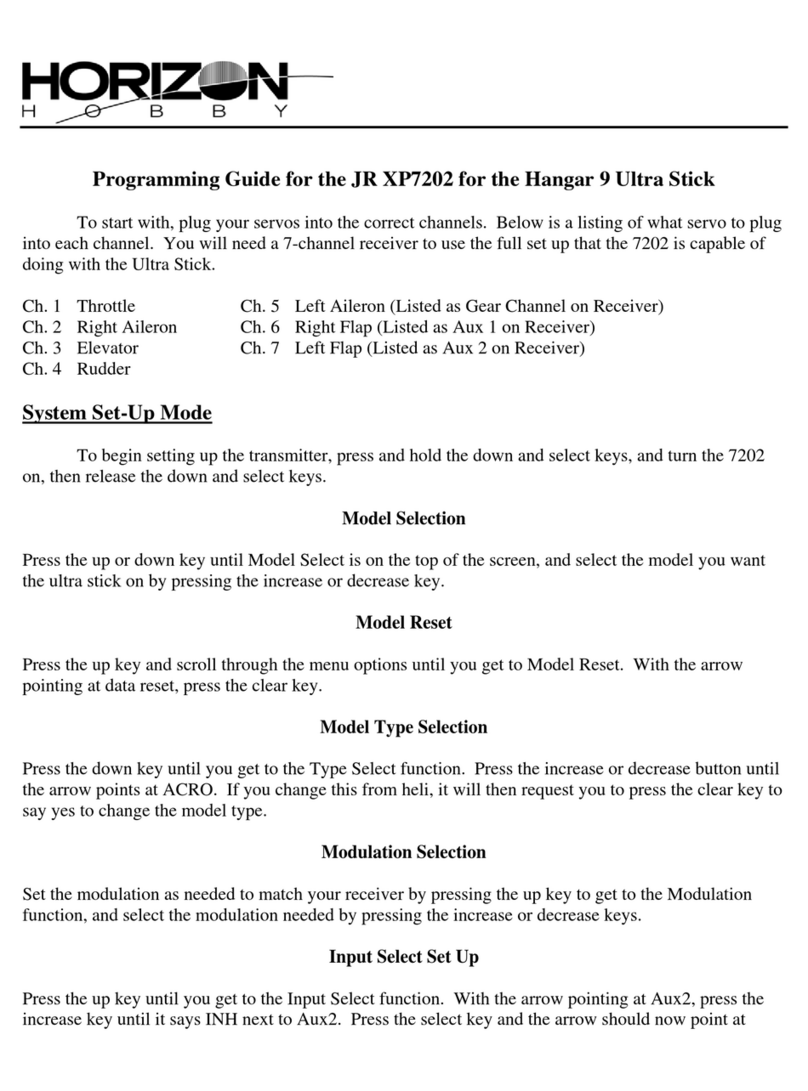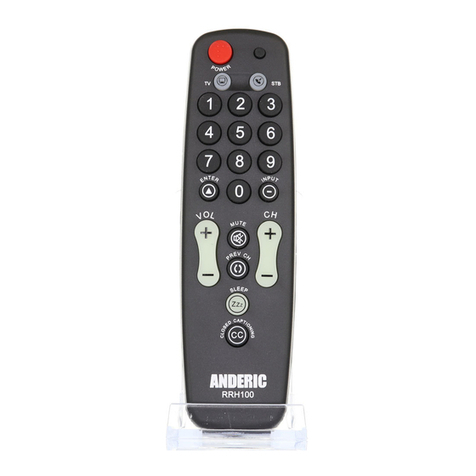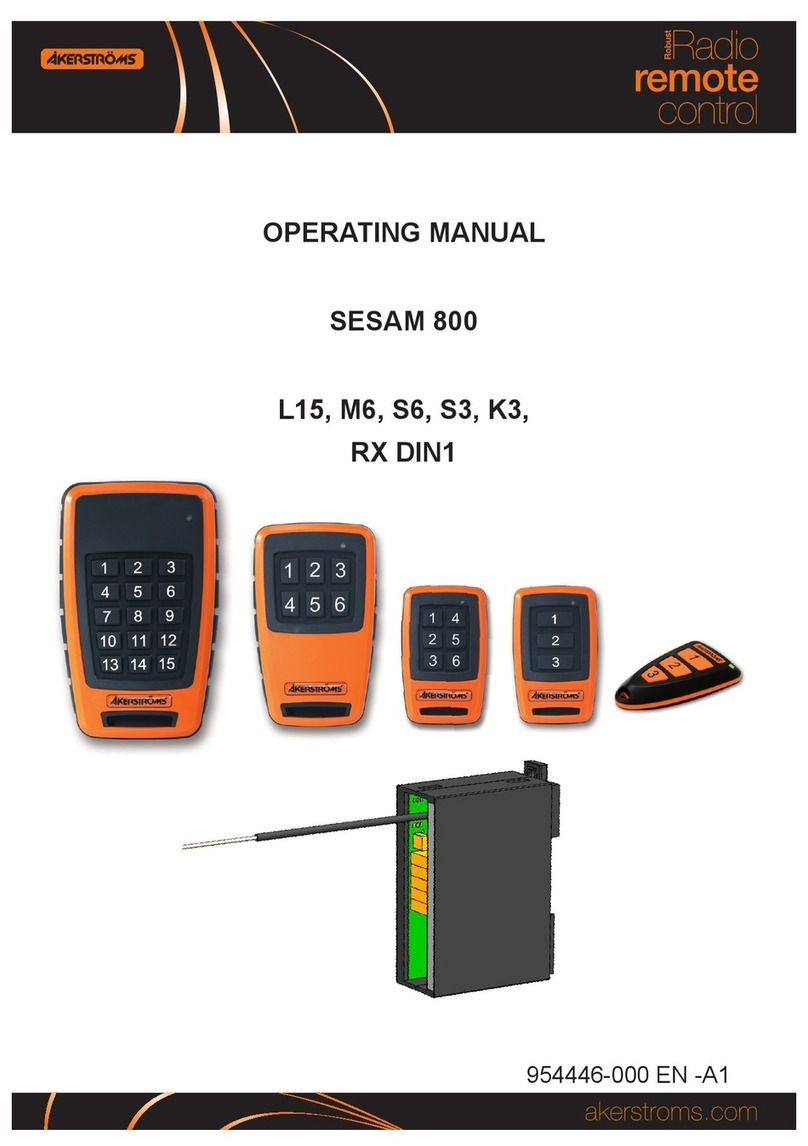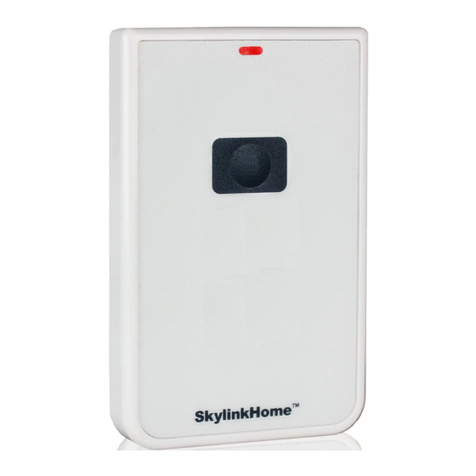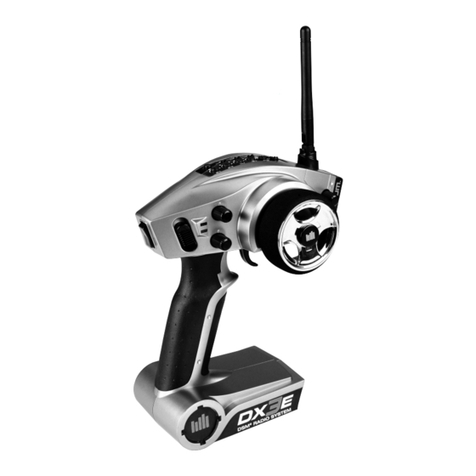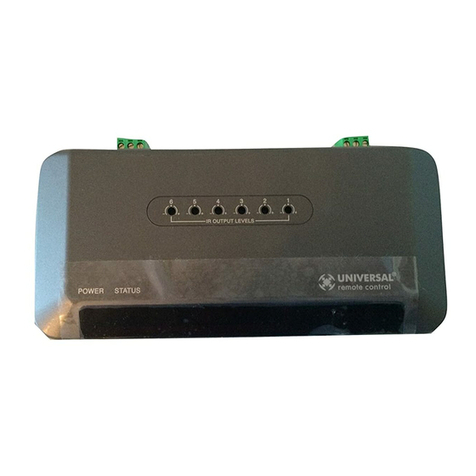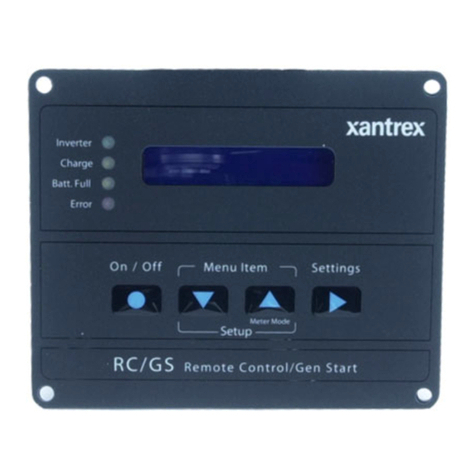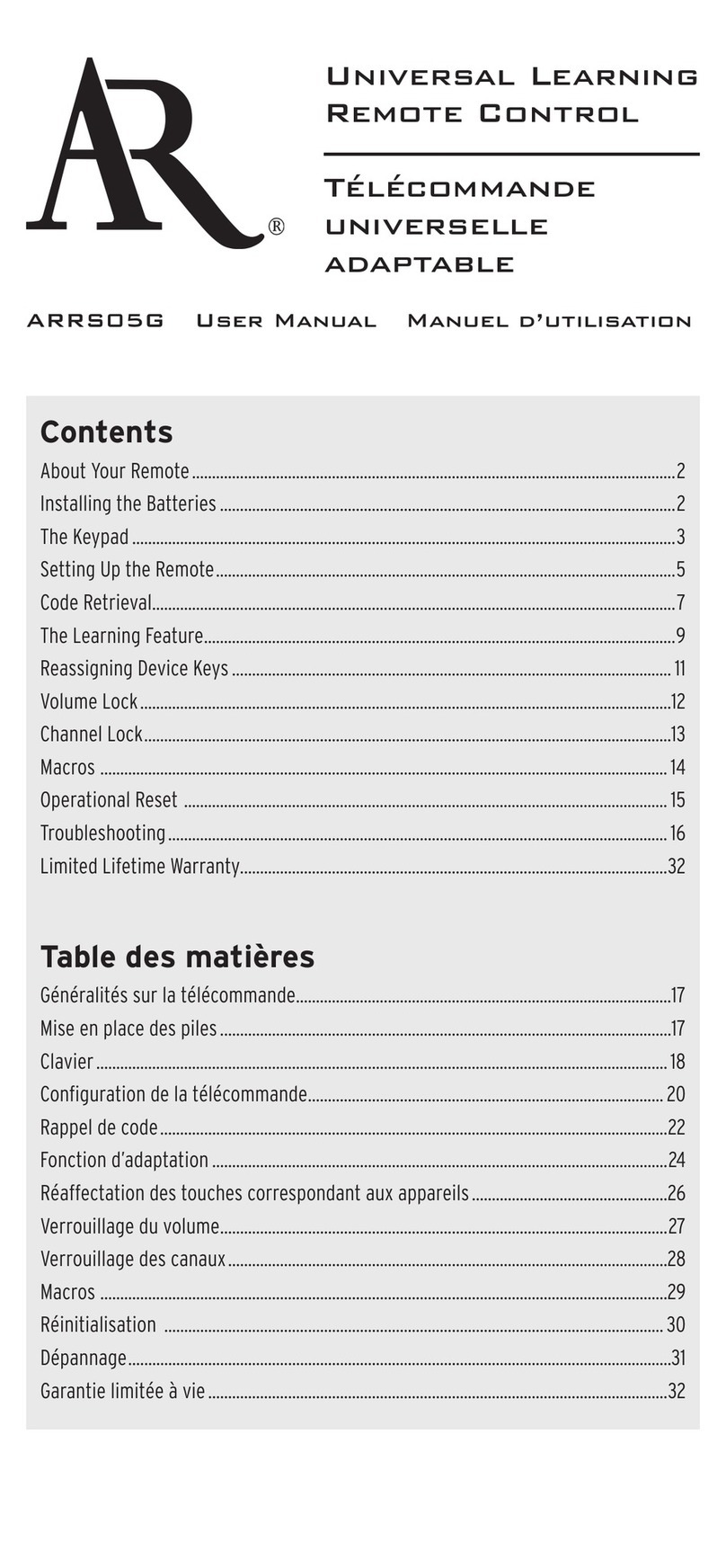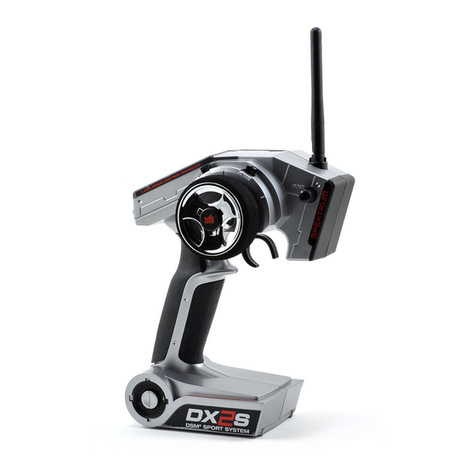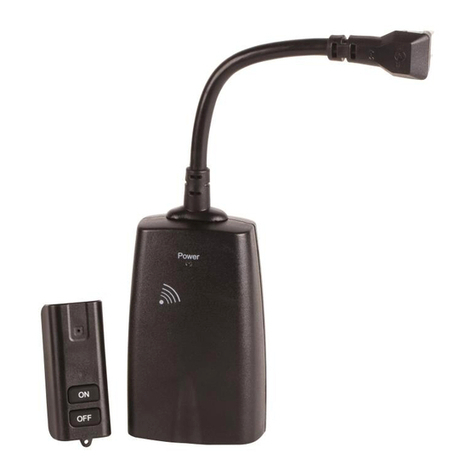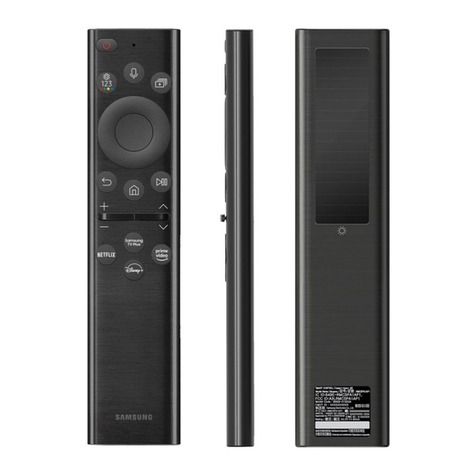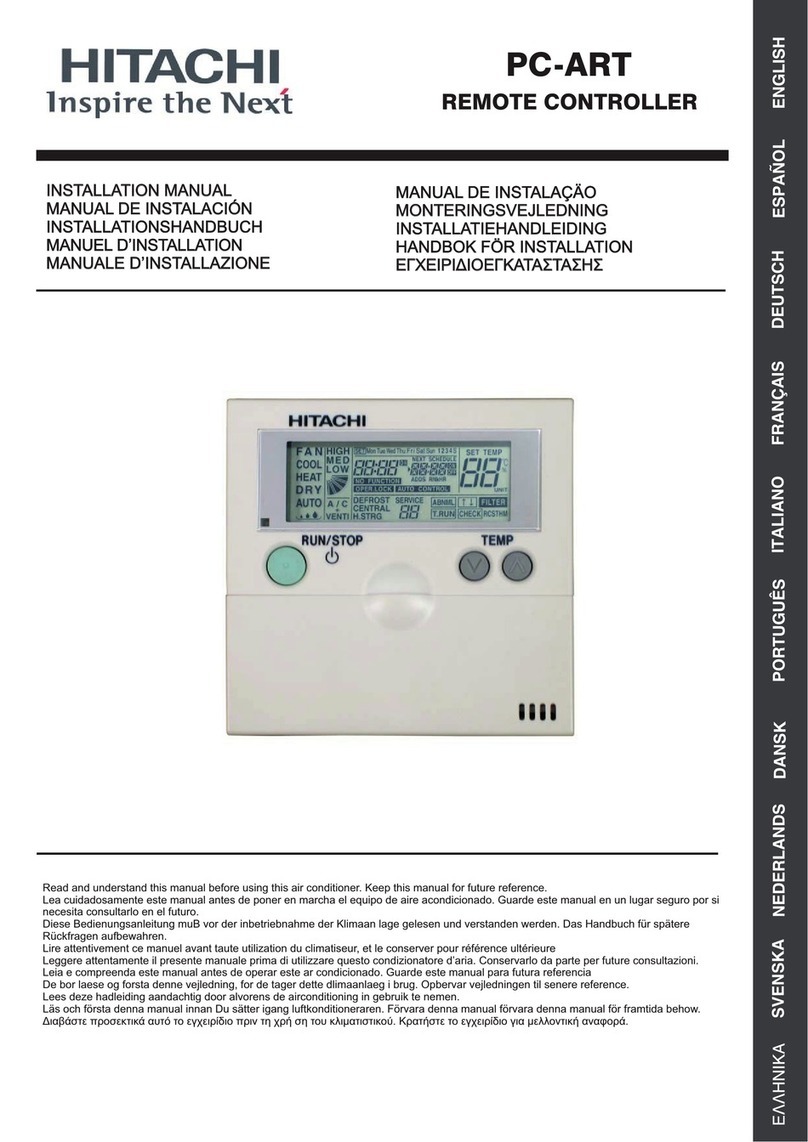MHZ PROTECO Shark New Guide

13_2008
Shark New
PRODOTTIPRODUITSPRODUCTSERZEUGNISPRODUCTOSManuale d’Installazione e d’UsoNotice d'Installation et UtilisationInstallation and use manualHandbuch der Installation und des GebrauchsManual de Uso e InstalaciónAUTOMAZIONI PER CANCELLI A BATTENTE AUTOMATISMES POUR PORTAILS A BATTANTSAUTOMATION FOR SWING GATES AUTOMATISIERUNG FÜR FLÜGELTOREAUTOMATISMOS PARA BATIENTES
PORTUGAL MHZ LDA
RUA DO FORAL Nº 68 3770-218 OLIVEIRA DO BAIRRO-PORTUGAL
WWW.MHZ.PT - [email protected]

6565160160315315415415
BB
SCHEMA FUNZIONALE - SCHÉMA DE CABLAGEWIRING SCHEME - FUNKTIONSPLAIN - ESQUEMA FUNCIONAL 24V230V24V dc0,4 - 0,8A60 W-------230V ~ 50 Hz1,2 - 2A300 W10 µF230 N661400 g/m2,50 m3,00 m200 Kg350 Kg110°110°16”16”90%50%350 N661400 g/m--------150°-25° - +70°C-25° - +70°Cmt= Lunghezza anta Longueur du vantail Leaf lenght Torflügelbreite Dimensiones hojasKg= Peso anta Poids du vantail Leaf weight Torflügelgewicht Pesa de la hojaIl diagramma è valido con tutta elettronica PROTECOCe diagramme n’ast valable que pour une installation avec une électronique PROTECOThe graphic is referred to PROTECO electronic systemsDas diagramm ist gültig mit PROTECO elektronicEl diagrama es válido si se utiliza electrónica PROTECOAlimentazione - Alimentation - Power supply - Anschluss - Alimentacin Assorbimento - Consommation - Absorption - Stromaufnahme - Absorción de líneaPotenza - Puissance moteur - Motor power - Motorleistung - Potencia Condensatore - Condensateur - Capacitor - Kondensator - CondensadorProtezione termica - Protection thermique - Thermic protectionThermoschutz - Proteccin térmicaSpinta max - Poussée - Maximum thrust - Drehmoment - Empuje máxGrado IP - Classe IP - IP level - Schutzart IP - Grado de protección IPGiri motore - Vitesse moteur - Motordrehzahl - Rotación del motorTemperatura di funzionamento - Température de service - Working temperature Temperaturbereich - Temperatura de servicioLunghezza max anta - Vantail maximum - Leaf’s maximum length Max. Flügelgellänge - Longitud máx. hojaPeso max anta - Poids maximum du vantail - Leaf-s maximum weight Max. Flügelgewicht - Peso máx. hojaAngolo max di apertura - Angle max d’ouverture - Maximum opening Max. Öffnungswinkel - Ángulo máx. de abertura Tempo di apertura 90° - Temps d’ouverture 90°- 90° opening time Öffnungszeit - Velocidad angular 90°Ciclo di lavoro - Cycle de travail - Duty cycle - Benutzungshäufigkeit - Ciclo de trabajoóóRevolutions speed -CARATTERISTICHE TECNICHE - CARACTERISTIQUES TECHNIQUES TECHNICAL FEATURES - TECHNISCHE ANGABEN - CARACTERISTICAS TECNICAS 501001502002503003504004500,511,522,53501001502002503003504004500,511,522,53Shark 24Shark 24Shark Shark Kgmt1Motoriduttore - Motoréducteur - Gear motor - Antrieb - Motorreductor2Centrale elettronica - Centrale électronique - Electronic control unit - Elektroschrenk - Central eléctronica345Fotocellule - Photocellules - Photocells - Fotozelle - Fotocélulas Rx TxLampeggiatore - Clignotant - Blinker - Blinkleuchte - Luz intermitenteSelettore a chiave - Contacteur á clé - Key switch - Schlsselschalter Selector de llave6Scatola di derivazione - Boîte de dérivation - Electric box - Kabelsteckdose -Caja de derivaciónü ABCC¹FD3 x 1,5 + T2 x 1,5 + T2 x 0,754 x 0,752 x 0,752 x 0,756654AA3333211C¹C¹CCFDB
302 V

Dado M 12x4F2F1COMPOSIZIONE - COMPOSITION - COMPOSITION - KOMPOSITION - COMPOSICION0115151402040710060301 n°1Motoriduttore 02 n°1Cassetta di fondazione n°1Coperchio n°1Supporto antan°1Leva di trasmissionen°1Condensatore 10 Fn°1Levan°4n°2Rondelle 8x3210 n°1Sfera Ø2511 12 n°1 Viti 3,5x9,5 per p18 n°1Manuale d’installazione ed uso03 04 05 06 07 di sblocco 08 Dadi autobloc. M12 per fissaggio motore 09 n°4 Viti a brugola TPSEI 6x10 inoxPiastra per chiusura foro coperchio13 n°4Rondelle 12x24 zinc.14 n°2iastra chiusura foro coperchio15 n°2Nottolino protezione dispositivo di sblocco16 n°1Fermo meccanico chiusura17 n°1Fermo meccanico aperturaµ01 n°1 - - - 02 n°1 - - - n°1 - - - n°1 - - - n°1 - - - n°1 - - - n°1n°4n°2 - - - 10 n°1 - - - 11 12 n°1 18 n°1 - - - MotoréducteurMotor MotorMotorCaisson de fondationFoundation box UnterflurgehäusCaja de fundaciónCouvercleCover GehäusedeckelTapaSupport vantailGate leaf support Türflügel StützeSoporte hoja Levier de transmissionTransmission lever KraftübertragungshebelPalanca de transmissiónCondensateur 10 µFCondenser 10 uF Kondensator 10 uFCondensador 10 uFSystème de déverrouillageRelease lever Freigabe Hebel Palanca de desbloqueoEcrous autobloquant pour fixation moteurM12 nuts to fix the motorSchraubenmutter M 12 für Motorfixierung Tuercas M12 para sujetar el motorRondelles 8x328x32 washers Unerlegscheiben 8x 32Arandelas 8x32Bille Ø25ø25 ball Kugellagerø25Bola ø25Vis TPSEI 6x10 inoxTPSEI 6x10 galvanised screws Sechskantschrauben PTSEI 6x10 verzinktTornillos galvanizados TPSEI 6x10 Patte fermeture couverclePlate to close the cover hole Scheibe für Motordeckellochung SchließungChapa para cerrar el agujero de la tapaRondelles 12x2412x24 washers Unterlegscheiben 12x24Arandelas 12x24Vis 3.5x9.5 pour patte fermeture couvercle3,5x9,5 screws to close the cover hole Sperrklinke für MotorschutzfreigabeTornillos 3,5x9,5 para cerrar el agujero de la tapaCliquet protection déverrouillageRelease key Sperrklinke für MotorschutzfreigabeLlave de desbloqueoFin de course fermetureMechanical limit switch for closing Final de carrera mecánico en cierreFin de course ouvertureMechanical limit switch for opening Final de carrera mecánico en aberturaNotice d’installationInstallations- und GebrauchsanweisungInstallation manual Manual de instrucciones03 04 05 06 07 - - - 08 - - 09 n°4 - - - - 13 n°4 - - - 14 n°2 - - 15 n°2 - - - 16 n°1 - - 17 n°1 - - 13050815161617111209Fig. B110°110°Fig. A90°90°Fig. C21PosizioneverticalePosizioneorizzontaleFig. DScavo di fondazioneDiggingexcavacin de fundacinóó5865Fig. EFig. G

P2P1CFig. GSferaFig. HFig. MFig. OFig. PL3L1L2L1Fig. I1 GIRARE IN SENSO ORARIO2 SFILAREFig. LPosizione dei motori nelle cassette Positionament des moteurs dans les caissonInsert the motor in the box - GetriebemotorsPositionamento de los motores las casasDxSxINTERNO - - - INTÉRIEURINSIDEINTERIORINNENSEITEINTERNO - - - INTÉRIEUR - INSIDEINTERIORINNENSEITEINTERNO - - - INTÉRIEUR - INSIDEINTERIORINNENSEITEMotoriduttore DESTROMotoriduttore SINISTROFERMO APERTURAFERMO APERTURAFERMO CHIUSURAFERMO CHIUSURAESTERNO - - EXTÉRIEUR - OUTSIDEEXTERIORAUßENSEITEFig. NF2F2F1F1DrenaggioacquaIngresso cavomotore

CRITERI DI SICUREZZADETERMINAZIONE POSIZIONE1Prima d’iniziare qualsiasi operazione d’installazione è assolutamente Adattare in base al tipo di struttura e di apertura che si vuole, l’esatta necessario leggere tutto il presente manuale.posizione della cassetta di Fondazione seguendo le indicazioni:2Verificare che le prestazioni dell motoriduttore acquistato corrispondano •Cancello fissato al centro del pilastrino (FIG. A)alle vostre esigenze d’ installazione.In questo caso l’angolo massimo di apertura del cancello è di 90°.3Inoltre verificare che:•Cancello fissato sullo spigolo interno del pilastrino (FIG. B)- Le cerniere del cancello siano in buono stato e perfettamente ingrassate.In questo caso il cancello può aprire con un angolo maggiore di 90°. - Il cancello sia dotato di fermi meccanici in apertura ed in chiusura. (max 110°)CONSIGLI PER L’INSTALLAZIONEPOSIZIONAMENTO CASSETTA DI FONDAZIONECollegamenti: E MOTORIDUTTORE•Vedere “Schema funzionale” e fare riferimento agli schemi della -Praticare nel terreno nella posizione stabilita, uno scavo di Fondazione centrale di comando.di dimensioni tali da poter contenere la cassetta di Fondazione. (Fig. •Tutti i collega me nti devono essere effettuati in assenza di D)alimentazione.-Posizionare la Cassetta di Fondazione all’interno dello Scavo di •Prevedere un dispositivo di sezionamento onnipolare nelle vicinanze Fondazione, assicurandosi che il perno sia allineato al cardine dell’anta dell’apparecchio (i contatti devono essere di almeno 3 mm)del cancello, mantenendo una distanza di 65 mm dal centro cardine al Proteggere sempre l’alimentazione per mezzo di un interruttore pilastrino. (Fig. E)automatico da 6A, oppure per mezzo di un interruttore monofase da 16A -Eseguire in prossimità del foro F1 (Fig. F) della cassetta di Fondazione completo di fusibili.uno scarico per l’acqua, che ne eviti, il ristagno.•Le linee di alimentazione ai motori, alla centrale e le linee di -Prevedere l’ingresso dei cavi elettrici attraverso il foro F2 della cassetta collegamento agli accessori devono essere separate onde evitare di Protezione, secondo “Schema funzionale”. (Fig. N)disturbi che potrebbero generare mal funzionamenti dell’impianto.-Interrare la cassetta di Fondazione utilizzando del calcestruzzo, •Qualsiasi apparecchiatura (di comando o sicurezza) eventualmente curandone la messa in bolla e la corretta posizione.asservita alla centrale deve essere libera da tensione (contatti puliti).-Posizionare la sfera nell’apposita sede dopo averla precedentemente Parti di ricambio:ingrassata, procedere posizionando il supporto anta “L1” nel perno •Utilizzare solamente parti di ricambio originali.della cassetta. (Fig. G)Modalità d’ installazione:-Posizionare l’anta del cancello sul supporto anta “L1” uscente dalla •Per un uso proprio del prodotto e per escludere ogni possibilità di cassetta di fondazione in modo che sia perfettamente allineata e fissare. danneggiamenti a persone, animali o cose, fare riferimento al foglio (Fig. E)"Generalità" allegato che fa parte integrante del presente manuale.-Posizionare il motoriduttore sul fondo della cassetta (assicurarsi che sia •L'impiego di questa apparecchiatura deve rispettare le norme di perfettamente libero da eventuali residui di calcestruzzo) rispettare sicurezza vigenti nel paese d’installazione oltre alle norme di buona l’orientamento del motore dx / sx seguendo la (fig. M) e fissarlo ai perni installazione.filettati con rondelle e dadi M12. (Fig. F)Garanzia:-Montare la leva ”L2” leva di Trasmissione unendo il supporto anta •La garanzia fornita dal costruttore decade in caso di manomissione, “L1” al motore tenendo presente che la parte più grande deve essere incuria, uso improprio, fulmini, sovratensioni o utilizzo da parte di posizionata sul supporto anta “L1” (Fig. H) e fissarla con rondelle e viti.personale non professionalmente qualificato.-Chiudere la cassetta di Fondazione, con il coperchio fissandolo con le •Fa inoltre decadere qualsiasi diritto alla garanzia: non rispettare le viti in dotazione.istruzioni riportate sui manuali allegati ai prodotti.L'applicazione anche di un solo particolare in modo non rispondente alla N.B.Nel caso il cancello apra verso l’esterno è possibile posizionare il motore legislazione vigente o l'utilizzo di parti di ricambio non congeniali e/o non all’interno della cassetta di Fondazione ruotandolo di 180°.espressamente approvata dalla ditta costruttrice.•Il costruttore non può considerarsi responsabile per eventuali danni causati da usi impropri ed irragionevoli.FERMI MECCANICI (fig. O)Nonostante il motoriduttore sia dotato di fermi meccanici in apertura e chiusura, è consigliabile la messa in opera di fermi in battuta sulle ante.SEQUENZA DI INSTALLAZIONE1Prima d’iniziare la messa in opera, effettuare sull’installazione l’analisi MANOVRA D’EMERGENZA (sblocco dell’anta)dei rischi facendo riferimento al foglio “Generalità“ che fa parte -Inserire la chiave nel nottolino di protezione sblocco posizionato nel integrante del presente manuale, riempire la tabella tecnica ed supporto anta. (Fig. I) eliminare i rischi rilevati. -Girare in senso orario e estrarre il gruppo.Nel caso in cui vi siano rischi residui, prevedere l’installazione con -Inserire la leva di sblocco nell’apposito foro e ruotare sempre verso il sistemi di sicurezza e completamento.centro del cancello. (Fig. L)2Verificare le norme di sicurezza citate nei “Criteri di sicurezza”.-A questo punto è possibile aprire e chiudere manualmente il cancello.3Identificare tutti i componenti.L’automazione si ripristina automaticamente alla prima manovra.4Identificare l’esatta posizione del GRUPPO MOTORE.-Riposizionare i nottolini di protezione sblocco.5Praticare sul terreno nella posizione stabilita uno scavo di Fondazione.6Posizionare la cassetta di Fondazione all’interno dello scavo di DISPOSITIVO PER APERTURA 180° (A 008)Fondazione.Il dispositivo viene utilizzato in casi particolari, per rendere possibili aperture 7Prevedere uno scarico per l’acqua.superiori da 110° a 180°.8Stendere i cavi come da “Schema funzionale ”-Sostituire la biella del motore con il pignone motore “P1”; fissare con la 9Posizionare e fissare il motoriduttore all’interno della cassetta di vite TCE 10x70 e dado M10 ( girare solo la vite, il dado rimane fermo Fondazione.nella sua sede). Fig. P10Montare il gruppo di leve per il movimento del cancello.-Sostituire il supporto anta inferiore in dotazione con il pignone supporto 11Chiudere la cassetta di Fondazione.anta “P2”.12Posizionare e fissare l’anta del cancello.-Unire le due parti mediante la catena di trasmissione “C” e inserire 13Collegare la centrale e tutti gli accessori.maglia di giunzione.14Programmare il ricevitore radio.15Eseguire la programmazione dei “Tempi di funzionamento”. In caso di mal funzionamento, fare riferimento alla tabella “Anomalie e POSIZIONE DELL’ELETTROSERRATURA (Fig. C)Consigli”.L’elettroserratura deve essere installata sull’anta che si apre per prima e NEL CASO IN CUI NON RIUSCIATE A TROVARE ALCUNA SOLUZIONE deve essere collegata ai relativi morsetti della centrale. TELEFONARE AL PIÙ VICINO CENTRO DI ASSISTENZA.Posizione 1: Posizionamento in orizzontale con aggancio all’ anta che si chiude per prima (in questo caso è necessario utilizzare il blocco a paletto sull’anta che si chiude per prima)ATTUATORE BLOCCATO Posizione 2: Posizionamento in verticale con aggancio a terra.I motoriduttori interrati con leva di trasmissione a movimento sono forniti in Ricordarsi di o rendere inattiva l’eventuale serratura meccanica versione bloccata.preesistente.

SAFETY RULESOPENING ANGLE1Please read carefully this instructions manual before proceeding with Place the foundation box according to the type of the gate and the angle of the installation.opening needed.2Make sure that the model of automation you have chosen properly suits Please consider that:to your needs.•The hinges of the gate are in the middle of the pillar (Fig. A)3Please also check that:The maximum opening is 90°.-your gate hinges are in a good condition and correctly greased•The hinges of the gate are on the edge of the pillar (Fig. B) -your gate is equipped with opening and closing ground-stops The maximum opening is 110°.INSTALLATION OF THE FOUNDATION CASE INSTALLATION ADVICESAND MOTORConnections:-Dig a hole in the ground to host the foundation case (Fig. D).•Please refer to the attached “Wiring scheme” for the correct connections -Place the foundation case into the excavation. Make sure that the pin to the control unitof the bracket that moves the gate is lined up with the gate hinge and •All connections have to be carried out while the equipments are not keep a minimum distance of 65mm between the pin of the case and poweredthe pillar (Fig. E).•A safety electrical switch should be connected to the equipment -Provide the installation with a drain from the hole F1 (Fig. F) of the according to any security provision for electrical installations currently in foundation case to prevent the water from stagnating.force in your country-Provide the case with an entry for the wires through the F2 hole •The main power supply should always be protected by a 6A automatic following the “Wiring scheme” instructions (Fig. N).switch or by a 16A mono-phase switch complete with fuses-Underground the foundation case into the concrete. Pay attention that •Use separate main lines to power the motors, the control unit and the the case lays flat and in the correct position.accessories to avoid interferences and troubles in operation-Grease the ball and place it in its seat; put the support bracket L1 on •Any control or safety device connected to the control unit has to be the pin of the case (Fig. G).voltage-free (clean contacts)-Place the gate's wing on the support bracket L1, make sure that it's Spare parts:perfect aligned and the fasten it to the bracket (Fig. E). •Use genuine spare parts only.-Place the motor on the case floor (make sure that there are no Installation:remains of concrete) according to the right/left orientation as shown in •Please refer to the “Generals Warnings” attached to this manual for an figure M and fix it to with washers and M12 nuts (Fig. F).appropriate use of the product and to avoid any damage to persons, -Assemble the support bracket L1 to the motor using the L2 driving animals or objects.bracket and fasten it with washers and screws.•The use of this automation musts comply with the regulations currently in -Close the foundation case and fix the cover using the provided force in the country of installation and to the general rules of good screws.installation. Warranty:Note: You can make the gate opening outward by turning the motor of •The warranty coverage lapses in case of negligence in use or 180° inside the foundation case.installation, as well as in case of lightings or overvoltage.•The manufacturer is not liable for defects caused by faulty assembling or MECHANICAL LIMITSmaintenance of the product or due to non compliance to the instructions Even if the motor is equipped with mechanical limits, the installation of for assembling, nor for defects caused by alterations of the product.ground-stops in closing and opening is highly recommended.EMERGENCY RELEASE OF THE GATE-Insert the key into the lock on the support bracket (Fig. I)INSTALLATION INSTRUCTION SEQUENCE-Turn the key clockwise and take the lock out.1Before starting the installation, please refer to the “General Warnings” -Insert the release bracket and turn it toward the centre of the gate (Fig. attached to this manual and carry on the risks analysis accurately. In the L).case of residual risks, further safety precautions must be provided.-Now you can move the gate manually: the electric opening will be 2Check first the above mentioned safety rules.automatically restored at the first operation.3Identify and check all the components of the system.-Don't forget to put the lock back to its place.4Determine the correct placement of the motor.5Dig the foundation in to the ground.180° OPENING DEVICE6Place the foundation case.You can use this optional device to make the gate opening up to 180° as 7Provide a drain for the water.follows:8Place the wires as described in the “Wiring scheme”.-Replace the motor bracket L3 with the P1 pin and fasten it using the 9Put the motor in to the foundation case and fix it.TCE 10x70 screw and the nut (turn the screw only, the nut remains 10Assemble the leverage for the gate moving.still in its seat). (Fig. P)11Close the foundation case.-Replace the lower part of the support bracket L2 with the P2 pinion.12Fix the gate wing to the leverage.-Link the two parts together by the transmission chain C and fasten it 13Wire the control unit to the motor and to all other accessories.with the joint.14Code the radio receiver.15Follow the control unit manual to code the radio receiver and program INSTALLATION OF THE ELECTROLOCKthe parameters.An electro-lock can be installed on the first opening wing of the gate and wire Should the system not working correctly please refer to the trouble-to the control unit.shooting page of the control unit manual or contact your distributorCase 1: The electro-lock is installed horizontally and it's closing on the second opening wing (in such the second opening wing needs a floor BLOCKED UNDERGROUND MOTORlatching).The underground motor is supplied in the blocked version.Case 2: The electro-lock is installed vertically and it's latching to the floorDo not forget to remove any existing mechanical lock.

CONTROLES PRELIMINAIRES DE SECURITEANGLE DE OUVERTUREAvant de procéder à l'installation il faut absolument lire avec attention cette Positionnez le caisson de fondation compte tenu du type de portail et de noticel'angle d'ouverture souhaité. 2Assurez-vous que le modèle de motorisation que vous avez choisi Considérez que:corresponde à vos exigences.•Vantail au milieu du pilier (Fig. A)3Vérifiez aussi que: Angle maximum d'ouverture 90° -la structure de votre portail soit en bonne condition et bien graissée.•Vantail au bord du pilier (Fig. B)-votre portail soit équipé avec des butées au sol en ouverture comme en Angle maximum d'ouverture 110°fermeture.CONSEILS POUR L'INSTALLATIONINSTALLATION DU CAISSON ET DU MOTEURBranchementsCreusez le trou dans la position choisie pour loger le caisson de Voir le “Schéma de câblage” ci-joint pour les branchements de la carte fondation (Fig. D)électroniquePosez le caisson dans la fouille. Assurez-vous que le tourillon du •Tous les branchements doivent être effectués en absence de tensioncaisson soit en ligne avec le gond du portail et gardez une distance •Pourvoir l'installation d'un switch (les contacts doivent être au moins de minimum 65mm entre le tourillon et le pilier (Fig. E)de 3mm). Protégez la ligne d'alimentation électrique par un coupe-Pourvoyez l'installation d'un écoulement près du trou du caisson F1 circuit automatique de 6A ou par un interrupteur monophasé de 16A (Fig. F) pour éviter la stagnation des eauxavec fusibles.Faites arriver un conduit pour le passage de câbles au trou F2 du •Les lignes d'alimentation des moteurs, de la carte électronique et les caisson (Fig. N)câblages des accessoires doivent être séparées pour éviter Coulez le ciment et maintenez le caisson enfoncé en veillant qui il soit interférences et/ou défaillances du système.dans la position correcte et au niveau•Tous les appareils (de commande et de sécurité) éventuellement Graissez la bille et introduisez-la dans son logement. Mettez la patte branchés à la carte électronique ne doivent pas être sous tension de support L1 du vantail sur le tourillon du caisson (Fig. G)(contacts propres).Placez le vantail sur la patte de support L1, assurez-vous qu'ils soient Pièces de rechangeen ligne parfaite entre eux et fixez (Fig. E)Utiliser seulement pièces de rechange originalesLogez le moteur dans le caisson (assurez-vous qu'ils ne restent pas Installationdes résidus de ciment) en respectant l'orientation droite/gauche du Pour un usage correct du produit et pour ne pas nuire à personnes, moteur comme indique (Fig. M) et fixez-le aux goujons à l'aide des animaux ou objets, respectez soigneusement les avertissements entretoises et des écrous M12 (Fig. F)indiqués dans les “Généralités” jointes à cette notice.Assemblez la patte de support L1 au moteur avec la patte de •L'installation et l'utilisation de cette motorisation doivent être effectuées transmission L2 (vérifiez que l'extrémité plus grande soit vers la patte dans le plein respect des lois, des normes et des règlements en vigueur L1) et serrez avec vis et entretoises.aussi que des normes générales de bonne installation.-Fermez le couvercle du caisson et serrez avec les vis en dotation.GarantieToute garantie déchoit en cas d'usage abusif du produit, incurie, foudres ou N.B.: Dans le cas que le portail s'ouvre vers l'extérieur positionnez le surtensions.moteur dans le caisson tourné de 180°.FINS DE COURSE MECANIQUES (Fig. O)Même si le moteur est équipé avec fins de course mécaniques en ouverture .et fermeture, on conseille l'installation de butées au sol pour les vantaux.SEQUENCE D'INSTALLATIONMANOEVRE DE SECOURS (Déverrouillage du vantail)Avant de procéder à l'installation, effectuer l'analyse des risques comme -Introduisez la clé dans la serrure sur la patte de support (Fig. I).indiqué dans les “Généralités” jointes a ce manuel-Tournez la clé dans le sens des aguilles d'une montre et sortez le 2Vérifiez les normes de sécurité citées dans le chapitre ci-dessus groupe serrure.«Contrôles préliminaires de sécurité ».-Insérez le levier et tournez vers le milieu du portail (Fig. L) .3Identifiez et contrôlez tous les composants du système.-Maintenant vous pouvez déplacer le vantail à la main: la motorisation 4Choisissez la position correcte du moteur.se rétablisse automatiquement lors de la prochaine manœuvre.5Creusez un trou de fondation.-Remettez le groupe serrure à sa place.6Positionnez le caisson de fondation dans le trou.7Pourvoyez l'installation d'un écoulement de drainage.SYSTEME POUR OUVERTURE A 180°8Faites arriver un conduit pour le passage des câbles électriques.Vous pouvez utiliser ce dispositif en option pour obtenir une ouverture 9Fixez le moteur dans le caisson de fondation.supérieure jusqu'à 180°:10Assemblez les leviers pour le mouvement du portail.-Remplacez la bielle moteur L3 avec le pivot P1 et serrez à l'aide des 11Fermez le caisson de fondation.vis TCE 10x70 et des écrous (tournez la vis seulement, l'écrou reste 12Fixez le vantail du portail.immobile dans son logement). (Fig. P)13Branchez la carte électronique et les accessoires.-Remplacez la partie inferieure de la patte de support L2 avec le 14Programmez le récepteur radio.pignon P2.15Suivez la notice de la carte électronique pour programmer les temps -Reliez les deux parties par la chaîne de transmission C et fermez de travail et les autres paramètres de la motorisation.avec le maillon de jonction.EN CAS LE SYSTÈME NE FONCTIONNE PAS CORRECTEMENT REFEREZ-VOUS AU CHAPITRE “ANOMALIES ET CONSEIL” DANS LA INSTALLATION DE L'ELECTROSERRURENOTICE DE LA CARTE OU APPELEZ VOTRE DISTRIBUTEUR.Une électro serrure, branchée à la carte électronique peut être installe sur le vantail que s'ouvre le premier.MOTEUR AUTOBLOQUANTOption 1 L'électro serrure est montée horizontalement et s'accroche sur le Les moteurs pour montage enterré sont fournis en version autobloquant.vantail que s'ouvre pour deuxième (dans ce cas il faut installer aussi un verrou au sol sur le vantail qui s'ouvre le deuxième).Option 2 L'électro serrure est montée verticalement avec gâche au solN'oubliez pas d'enlever toute serrure préexistante.1.•.•.•Le fabricant n'est pas responsable des pannes et défaillances causées par une mauvaise installation ou entretien ou imputables au non-respect de la notice d'utilisation et entretien ou à altérations du produit effectués sans concertation et avis écrits du fabricant1.-.-.-.-.-.-.-.-.-

CRITERIOS DE SEGURIDADDETERMINACIÓN POSICIÓN 1Antes de empezar la instalación leer atentamente todo el presete manualEligir con respecto al tipo de estructura y de abertura requerida la exacta 2Asegurarse que el rendimiento de este motorreductor corresponda a posición del grupo motor siguiendo las indicaciones:vuestras exigencias de instalación.CANCELA FIJADA EN EL CENTRO DEL PILAR (Fig.A)3Además averiguar que:En este caso el angulo máximo de abertura de la cancela es de 90°.- las bisagras sean en buenas condiciones y perfectamente lubricadasCANCELA FIJADA EN LA ESQUINA DEL PILAR (Fig.B) - la cancela tenga topes mecánicos en abertura y cierre.En este caso la cancela puede abrir por una angulación mayor a los 90°.(max 110°)ADVERTENCIAS PARA LA INSTALACIÓNConexionesINSTALACIÓN DE CAJA DE FUNDACIÓN •Ver “Esquema funcional” y hacer referencia a los esquemas del cuadro Y MOTOR de maniobra.-Practicar en el suelo, en la posición establecida, una excavación de •Todas las conexiones tienen que ser efectuadas en absencia de Fundación para poder contener la caja de protección.suministro de corriente.-Posicionar la Caja de Protección dentro de la excavación de fundación, •Planear un aparato de seccionamiento omnipolar cerca del dispositivo asegurandose que el perno sea alineado al gozne de la hoja de la (los contactos tienen que ser de 3 mm como mínimo).cancela, manteniendo una distancia de 65 mm del centro del gozne del Proteger siempre lel suministro de corriente por medio de un interruptor pilar (fig.E).automático de 6A, o por medio de un interruptor monofásico de 16A -Practicar cerca del agujero “F1” de la caja de protección un tubo de salida completo de fusibles.para el agua para evitar estancación y sucesivas oxidaciones (Fif.F).•Las lineas de suministros de corriente a los motores, al cuadro y las -Prever el percurso de los cables eléctricos através del agujero “F2” de la lineas de conexiones a los accessorios tienen que ser separadas para caja de protección, según el “Esquema funcional ”(Fig. N)evitar interferencias que pueden dañar el funcionamiento de la -Soterrar la caja de protección utilizando el hormigón, haciendo cuidado a instalación.la regulación por medio de la burbuja de aire y a la corecta posición del •Cualquier aparato (de mando o de seguridad) eventualmente conectado borde superior.con el cuadro tiene que ser sin suministro de corriente (contactos limpios)-Posicionar la bola de matal en su lugar despues de engrasarla.Repuestos-Posicionar la hoja de la cancela sobre la palanca “L1” que sale de la caja •Utilizar solo repuestos originales.de manera que sea perfectamente alineada y fijar. (Fig. E)Modalidad de instalación-Posicionar el motorreductor en el fondo de la caja (asegurarse que no •Para un uso apropiado del producto y para quitar cualquiera posibilidad haya ningun resto de hormigón) respectar la orientación derecha / de daños a personas, animales u objetos, hacer referencia a las izquierda de los motores siguiendo la (Fig. M) y fijarlos a los pernos “Generalidades”que pertenecen al presente manual.filetados por medio de rondanas y tuercas M12 (Fig. F)•El empleo de este aparato tiene que respectar las normativas de -Instalar la palanca de transmisión “L2” juntando la palanca “L1” al motor seguridad del País de instalación y la normativas de buena instalación.considerando que la parte más larga tiene que ser puesta sobre la Garancía palanca “L1” (Fig. H) y fijarla con rondanas y tornillos.•La garancía ofrecida por el contructor no es válida en el caso de perjuicio, -Cerrar la caja de protección con la tapa fijando los tornillos apropriados negligencia, uso impropio, sobretensión o instalación por parte de en dotación.técnicos no profesionalmente califaicados.•La garancía no es además válida si no se respetan las instrucciones de N.B.: En el caso de cancela que abre hacía el exterior es posible posicionar el los manuales entregados con los productos.motor en el interior de la caja de Protección haciendo una rotación de 180°.•El uso de material que no cumpla con las normativas vigentes o de repuestos no idoneos ni aprovados por el constructor.APARADO PARA ABERTURA 180° (A008)El constructor no se puede considerar responsable por eventuales Este aparado se utiliza para instalaciones particulares para abrir desde daños causados por usos impropios. 110° hasta 180°.-Sostituir la biela del motor con el piñon motor “P1”, fijar con el tornillo SECUENCIA DE INSTALACIÓNTCE 10x70 y tuerca M10 (girar sólo el tornillo, la tuerca queda parada) 1Antes de empezar la instalación, analizar los riesgos referiendose a las Fig.P.“Generalidades”de este manual, rellenar la plantilla técnica y eliminar -Sostituir el soporte hoja en dotación con el piñon soporte hoja “P2”.los riesgos elevados.-Juntar los dos piezas con la cadena de trasmisión “C” y introducir el Si hay riesgos residuales hacer la instalación con sistemas de aslabón de unión.seguridad y de completamento.2Controlar las normativas de seguridad de los “Criterios de seguridad”TOPAS MECNICOS (Fig. O)3Identificar todos los componientesA pesar de que el motor tiene seguros mecánicos en abertura y cierre 4Identificar la posición exacta del grupo motor.integrados se aconseja utilizar también topes mecánicos para las hojas.5Practicar en la tierra en la posición establecida una excavación de fundación.DESBLOQUEO DEL ACTUADOR6Posicionar la caja de protección en la excavación de Fundación.-Insertar la llave en la cerradura en el soporte hoja (Fig. 1).7Prever un tubo de bajada para el agua.-Girar en sentido horário y extraer el grupo.8Poner los cables como en el “Esquema Funcional”-Insertar la palanca de desbloqueo en el agujero y girar siempre en 9Posicionar y fijar el motorreductor en el interior de la caja de proteccióndireccion del centro de la cancela. (Fig. L)10Instalar el grupo de palancas para el movimiento de la cancela.-Ahora es posible abrir y cerrar la cancela manualmente.11Cerrar la cajas de protección La automación se restablece automaticamente a la primera abertura.12Posicionar y fijar la hoja de la cancela.-Reposicionar los tapones de protección desbloqueo.13Contectar el cuadro de maniobra y todos los accessorios.14Programar el receptor rádioPOSICIÓN DE LA ELECTROCERRADURA (Fig. C)15Hacer la programación “Tiempos de funcionamiento”. La electrocerradura tiene que ser instalada en la hoja que abre primera y En caso de malo funcionamiento hacer referencia al esquema “Anomalías tiene que ser conectada con los relativos bornes en el cuadro de maniobra.y advertencias”.Posición electrocerradura: (Fig.C)SI NO ENCOTRAIS NINGUNA SOLUCIÓN LLAMAR AL MÁS CERCANO Posición 1:Colocación en horizontal con enganche con la hoja que cierra CENTRO DE ASISTENCIA.primera (en este caso es necesario utilizar el pestillo en la hoja que cierra primera)ACTUADOR BLOQUEADOPosición 2 :Colocación en vertical con enganche en el suelo (en este caso Los motorreductores soterrados con alzaprima de transmisión de no es indispensable utilizar el pestillo).movimiento estan suministrados en versión bloqueada.Recordarse de eliminar la cerradura mecánica, si ya está presente o por lo menos desactivarla bloqueandola en posición abierta y eliminar todos los pestillos de cierre.(FIG. D)

SICHERHEITSNORMENPOSITINOSBESTIMMUNG1Lesen Sie bitte sorgfältig diese Gebrauchsanweisungen vor dem Anfang Legen Sie den genauen Standort des Motors fest, in dem später die genaue jeder Montierung.Reihenfolge der Öffnung erfolgen soll. 2Überprüfen Sie ob das Gerät die gerechte Installationsansprüche Folgen Sie diese Anweisungen:gerecht wird.•BEFESTIGUNG DES TORFLÜGELS AN DER PFORSTENMITTE 3Auâerdem wäre es nötig dass:DES (Abb. A)-Die Torscharniere in guten Verhältnissen und gut eingeschmiert sind.In diesem Fall lässt sich das Tor bis zu einem Öffnungswinkel von 90° -Das Tor mit mechanischen Sperren bei Verschluss und Öffnung Öffnen.ausgerüstet ist.•BEFESTIGUNG AN DER PFORSTENSPITZE AM TORFLÜGELECK (Abb. B)HINWEISE ZUR INSTALLATION In diesem Fall ist es möglich einen höheren als 90° Öffnungswinkel zu Anschlüsse:erreichen (max. 110°)-Mit Bezug auf die Steuerungsanleitungen, folgen sie den geschriebenen Anschlüssen.SICHERUNGSKASTEN MOTORGETRIEBE-Der vom Antrieb herausgehende Kabel muss nicht gespannt sondern, ·Bereiten Sie ein Fundament vor wo später der Sicherungskasten ungespannt und mit einer breiten Kurve sein, damit der Rückfluss vom eingelassen wird. (Abb. D)Wasser verhindert wird.(Abb. O)·Positionieren Sie den Sicherungskasten so, dass der Hebel linear zum -Die oben genannten Vorgängen müssen unbedingt mangels von Torflügel und mit einen Abstand von 65mm vom Torpfosten liegt. (Abb. E)Stromversorgung durchgeführt werden.·Bohren Sie am Ende des Sicherungskasten F1 einen Wasserablaufkanal -Es wird empfohlen, die Stromleitung entweder mit einem Schaltautomat vor, der die mechanischen Bauteilen vor Beschädigung oder in Folge zu 6A oder mit einem einphasigen Schalter zu 16A komplett mit (Oxidation) schützt. (Abb. F)Sicherungen zu schützen.·Stecken Sie die Kabeln durch das vorgesehene Loch F2 des -Die Speisungswege der Antriebe, der Steuerung und die Verbindungen Sicherungskaten durch wie unter der Beschreibung „Funktionsplan mit den Zubehören müssen immer getrennt sein, um Störungen zu beschrieben“. (Abb. N)vermeiden, die einen Misslauf in der Anlage bewirken könnten.·Das Gehäuse ein mauern und bitte darauf achten das er genau -Jede Einrichtung (Steuerung oder Sicherheitsvorrichtung), die zur positioniert wird (mit Hilfe einer Wasserwaage) kontrollieren.Steuerung verbunden ist, muss spannungsfrei sein.•Den Bereich im geeigneten Sitz positionieren nachdem sie den Flügel Ersatzteile:Support „L1“ im Bolzen von dem Kasten verfahren sich vorhergehend gut -Nur originale Ersatzteile verwenden.eingeschmiert haben,. (Abb.G).-WICHTIG: Die Batterien nicht al Abfall wegwerfen, sondern wie •Das Torflügel auf dem Flügel Support "L1“ auf dem Kasten von der industriellen Abfall sortieren. (Gesetz 475/88).Stiftung positionieren ausscheidend damit sie genau auf einer Linie Montierungsbedingungen:festliegen und fixieren (FIG. E) -Für den richtigen Einsatz des Produktes und um jede Möglichkeit von Das Getriebe auf dem Grund des Kastens positionieren (sichern sie Schäden an Personen, Tieren oder Sachen auszuschlieâen, beachten sich ab, dass es genau frei von eventuellen Rückständen von Beton Sie das beiliegende Blatt “Allgemeines“, das als wesentlicher liegt) befolgen sie die Orientierung der Motoren dx Rechts /s x Links Bestandteil des vorliegende Handbuchs anzusehen ist.wie im (Abb. M) beschrieben und schrauben sie an der -Der Einsatz der Ausrüstung muss den geltenden Sicherheitsvorschriften Unterlegscheibe mit Hilfe der Bozen und Müttern M12 (Abb. F).des Landes, in dem sie installiert wird, sowie den Vorschriften einer •Den Hebel „L2“ Übertragungshebel verbinden an den Flügelhalter ordnungsgemäâen Installation entsprechen.„L1“ beachten sie immer das das größere Ende auf den Flügelhalter Garantie:„L1“ ( Abb. H) fixiert werden muss mit Hilfe der Müttern und -Die vom Hersteller gewährte Garantie entfällt im Falle von unerlaubten Schrauben..Eingriffen in die Anlage, Nachlässigkeit, Missbrauch, Blitzschlägen, Den Unterflurkasten mit Deckel schließen und festschrauben mit Hilfe Überspannungen oder bei Bedienung von unzureichend qualifizierten der Schrauben.Personen.P.S.. Im Falle das das Tor eine Außenöffnung hat ist es möglich das -Auch in folgenden Fällen entfällt jeglicher Garantie Anspruch: Getriebemotor im Innern des Unterflurkastens zu positionieren, rotieren Nichtbeachtung der Anleitungen auch nur eines einzigen Elementes, das es auf 180°.nicht den geltenden gesetzlichen Vorschriften entspricht.-Verwendung von ungeeigneten und/oder von solchen, die nicht MECHANISCHE ENDANSCHLÄGE (Abb. O) ausdrücklich von der Firma genehmigt wurden. Der Hersteller übernimmt Trotz der vorgegebenen Mechanischen Feststeller/ Endanschläge keine Verant wortung für eventuelle Schäden, die auf einen Ausstattung in der Eröffnung, und ist Schließung ist es ratsam bei jeder unsachgemäâen und unvernünftigen Einsatz zurückzuführen sind.Installation Türanschläge am Boden an zu bringen.INSTALLATIONSFOLGENOTFALLMANÖVER (Notendriegelung)1Vor dem Einsatzanfang, lese sie sorgfältig das Blatt “Allgemeines“ das •Den Freigabeschlüssel im der Torschutzklinke stecken der sich in der als wesentlicher Bestanteil dieses Hangbuches anzusehen ist und Torflügelstütze befindet. (Abb. I)unternehmen Sie bitte eine genaue Risikoanalyse.•Im Uhrzeigersinn drehen und die Gruppe herausziehen.2Die Sicherheit überprüfen. •Stecken sie den Freigabe Hebel im das sichtbaren Loch und in 3Den rechten und linken Antriebunterscheiden.Richtung Torzentrum drehen. (Abb. L)4Stellen Sie den genauen Standpunkt des Motor fest.•Es ist in diesen Stadium möglich und das Tor manuell zu öffnen.5Graben Sie ein stabiles Fundament in die Erde.Die Automatisierung stellt sich automatisch in Ihre 6Legen Sie das Motorgehäuse ins Innere des Fundaments.Ursprungseinstellung wieder her.7Verlegen Sie einen Wasserablaufskanal.•Den Freigabeschutz wieder einführen.8Alle Kabel so verlegen wie im “Funktionsplan beschrieben“.9Legen und Verschrauben Sie den Motor fest ins Innere des vorher Öffnungsvorrichtung auf 180° (A 008)angebrachte Motorgehäuse.Diese Öffnugsvorrichtung wird in sonderbaren Fällen angewendet um die 10Montieren Sie alle Zubehörbewegungsteile des Tor.Möglichkeit Toröffnungen über 110° bis auf 180° zu bieten.11Schlieâen Sie die Platte.12Positionieren und ans Torflügel befestigen.•Den Motorpleuel mit den Motorritzel ersetzen „P1“; fixieren und 13Die Kabeln wie in dem “Funktionsblatt“ zusammenschlieâen. schrauben sie mit der TCE 10x70 Schraube und Schraubenmutter 14Den Funkempfänger programmieren.M10 fest (drehen sie nur die Schraube und nicht die Schraubenmutter) 15Die “Betriebszeit“ programmieren Im Fall eines Misslaufs ist es Abb. Pnotwendig die Tabelle “Abweichungen und Bratungen“ sorgfältig zu •Austausch der vorgegebenen unteren Torflügelstütze mit Hilfe des lesen.Torflügelritzels „P2“ .•Verbinden sie die beiden Teile anhand der Übertragungskette „C“ BLOCKIERTER ANTRIEBeinzufügen der Verbindungsmasche.Die Antriebe werden in blockierter Ausführung geliefert.Der Elektroschloss muss an den ersten öffnenden Flügel montiert werde, POSITION DES ELEKTROSCHLOSS (Abb. C)und an das Klemmbrett der Steuerung angeschlossen sein.Position 1: Treffen vom Elektroschloss mit dem Tor beim Torschließen.(In diesem Fall ist es notwendig den Pflock auf dem erste zu schließenden Flügel zu benutzen)Position 2: Elektroschloss am Boden: Vertikaler Positionierung mit Festhackung am Boden.(In dieser Position ist die Anwendung des Pflocks nicht notwendig)Nicht vergessen! Alle vorher existierenden Mechanischen Verschlüsse deaktivieren.

PORTUGAL MHZ LDA
RUA DO FORAL Nº 68 3770-218 OLIVEIRA DO BAIRRO-PORTUGAL
WWW.MHZ.PT - [email protected]
Table of contents
Languages:
Other MHZ Remote Control manuals
